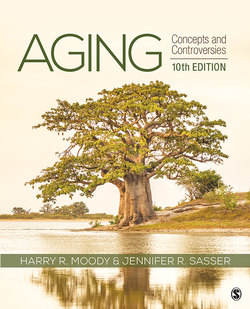Читать книгу Aging - Harry R. Moody - Страница 84
На сайте Литреса книга снята с продажи.
Genetic Approach
ОглавлениеMany lines of evidence point toward the central role of genetics in fixing the longevity of each species, although for any individual, length of life is the result of both genetic and environmental factors. We often think of genetic inheritance as the element that is fixed and unalterable, but some genetic studies have shown a dramatic ability to improve maximum life span over generations.
For example, studies have been conducted on bread mold, fruit flies, mice, and nematode worms. In all these species, genetic manipulation has been shown to modify maximum life span. Some mutated forms of nematode worms have exhibited substantial increases. Among mice, large differences in average life expectancy and maximum life span exist among different strains because of hereditary differences. In the fruit fly, scientists have achieved an increase in average as well as maximum life span by using artificial selection as a breeding technique.
Some recent genetic experiments have produced astonishing gains in longevity. For example, Michael Rose, a population geneticist, used artificial selection to produce fruit flies with a life span of 50 days (double the normal average of 25 days); the equivalent would be a human being living to 240 years of age. Rose, in effect, has in the laboratory mimicked an increase in the evolutionary rate of change. As a result, successive generations of fruit flies passed along genes favoring prolonged youth and longevity (Rose, 2005).
Thomas Johnson, a behavioral geneticist, went further and altered a single gene (known as Clock-1) out of the roundworm’s 10,000 genes. He also achieved a doubling of the worm’s 3-week life span (Johnson, 1990). Still other studies suggest that in some fruit fly populations, the risk of mortality may decrease with advancing age, a finding that challenges previous assumptions about maximum life span (Barinaga, 1992). These dramatic successes, through breeding or direct genetic manipulation, point to the way that genetic change may have come about rapidly through natural selection.
Whether any of these findings can be applied to humans is, again, unknown, but we can draw some conclusions about the genetics of aging. For instance, in at least several of the animal studies cited here, the genes involved governed antioxidant enzymes and mechanisms for repair of damage to DNA, which have been at the center of several theories about the biology of aging. Second, in the species benefiting from genetic change, a small number of genes have been involved in determining longevity. Thus, these results could possibly be applied to higher animal species.
New horizons for genetic application are already visible. Scientists have found a way to double the life of skin cells by switching off the gene that regulates production of a specific protein responsible for manifestations of aging. A similar method of genetic engineering has been used with tomatoes, permitting them to be stored and shipped without decay. The key here is the so-called mortality genes, which determine the number of times that cells divide. Thus, this intervention addresses the Hayflick limit, which remains central to aging at the cellular level. Even without affecting maximum life span, this sort of gene therapy could have major applications in the future, perhaps leading to a cure for age-related diseases such as Parkinson’s, Alzheimer’s, and cancer.
The recent Human Genome Project has produced a comprehensive map of the entire sequence of genes on the human chromosome. Genetic engineering could draw on that knowledge in ways that might dramatically change what we have thought of as the process of aging and even our assumptions about the maximum human life span. Such speculations, however, belong to the future.
